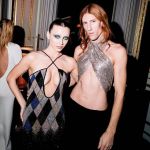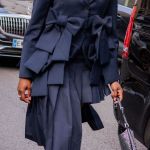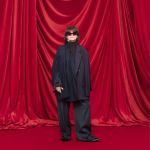
5 shows that prove that New York Fashion Week is not dead
Despite some claiming otherwise
February 17th, 2022
The New York Fashion Week, seen from the eyes of a European, who also lives and works in Milan, is something peculiar: accustomed as we are to having the big European brands right in front of us, giants that have dominated the industry for decades, what happens on the other side of the ocean seems small and far away – but it is not necessarily so. American design often ends up the victim of a certain prejudice (from which even the author of this piece suffers from occasionally) that leads to consider it secondary to the work of European designers. Even giants such as Tom Ford, Marc Jacobs and Michael Kors (who presented a very valuable collection this fashion week) receive very lukewarm attention compared to the great European luxury brands, while cult American brands such as Bode, The Row, Enfants Riches Deprimés or ERL either do not attend, or present elsewhere (The Row moved to Paris this year, to name one) or have occasional presences as in the case of Pyer Moss, who practically disappeared after its couture show last July. Meanwhile, american designers who become famous (from Teddy Santis to Tremaine Emory and Rhuigi Villaseñor, to name a few) enjoy enormous influence but operate in a sphere very far from the classic luxury fashion that New York Fashion Week follows.
Yet, taking note of this curious configuration for which American fashion is more influential than ever but the American fashion week is not, to define in a too tranchant way the New York Fashion Week as something irrelevant is to generalize unnecessarily. If it is true that New York does not have the same impact as Milan or Paris, it is also true that to dismiss all the collections in bulk as insignificant means not recognizing the excellent work signed by a series of creatives who would attract much more praise and resonance if they weren't victims of the Eurocentric prejudice.
So here are 5 shows that show that New York Fashion Week is not dead.
Laquan Smith
Laquan Smith is perhaps the most New York designer on this list. Her eponymous brand debuted in 2013, building collection after collection a feminine language, vaguely excessive and showy but also very measured. Last year's collections, the FW21 and SS22 brought a new rigor to the designer's aesthetics but it is with the FW22 show opened by Julia Fox that her aesthetic vision has been concentrated to the maximum. Smith loves centimeters of uncovered skin, sequins, cut-outs – it is a style by its very nature excessive, aggressively feminine, and that this year has focused with surgical precision on constructions and materials.
Gabriela Hearst
Uruguayan Gabriela Hearst, a champion of sustainable fashion, is an example of a designer with a firm foot on both sides of the Atlantic. If his work for Chloé is rightly celebrated, even the collection that bears his name and went on the catwalk a few days ago was very strong, establishing a difficult balance between sartorial rigor and softness, between blazers and fringed shawls, between elegance and informality. The main merit of the collection is to apply the genderlessness method to design without rhetoric or superfluous acrobatics, taking its principles as a simple fact.
Dion Lee
Dion Lee is an Australian designer who over the years has developed a sleek-chic aesthetic related to the work of Matthew Williams and Heliot Emil's Julius Juul and reminiscent of certain design solutions introduced by Rick Owens. His work, however, is more extreme, more elegant, built with a rare constructive sophistication as well as with a mixture of geometrism and sensuality that strikes a lot on the catwalk but which, on the product level, is able to speak individually to all audiences – from the lover of luxury sportswear to those who prefer a more conservative fashion. Although in dialogue with market and industry trends, Lee's FW22 collection was original, full of intricate details that never seemed artificial or arbitrary.
Peter Do
Peter Do is perhaps one of the leading masters of contemporary American luxury fashion. After cutting his teeth under Phoebe Philo and having become the flag-bearer of an uber-conceptual normcore aesthetic, almost playful in its composite acrobatics, Peter Do is able to perform perfect and very sophisticated variations on everyday sartorial items such as a pair of jeans, a coat, a suit, a messanger bag. If its debut on the catwalk last year was one of the highest points of New York Fashion Week, the FW22 collection took the discourse even further, doubling in refinement, in a cleanliness of lines and silhouettes that always keeps viewers on the rope but also in an extreme sophistication that few brands around the world are able to emulate plausibly.
Maryam Nassir Zadeh
Maryam Nassir Zadeh debuted as a boutique, presenting her first collection way back in 2012. In recent years her aesthetic inspired by vintage, a friend of an apparently chaotic styling but built with a very careful eye has been refining more and more, culminating with the last two collections and especially in the recent FW22 which, in addition to having brought body positivity also in menswear, has managed to lower the creative language of the designer in an aesthetic that is both very personal but also extremely wearable – a voice of the hands on fashion of which we will surely hear about for a very long time in the coming years.

































































































